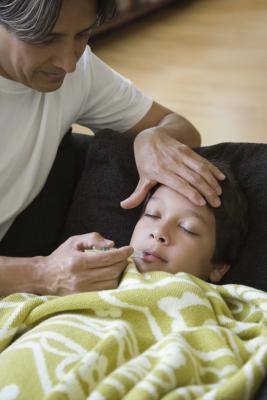最新一期权威医学杂志——《柳叶刀》上发布了一项救助儿童会的研究结果表明:在家接受基层卫生工作者的治疗能够降低肺炎这一儿童健康头号“杀手”造成的死亡。
11日,《柳叶刀》杂志发布了一项救助儿童会的最新研究,这一在巴基斯坦进行的研究显示:患严重肺炎的儿童在家里接受经过培训的基层女性卫生工作者的治疗,其康复的几率比那些到卫生机构去接受治疗的儿童还要高。这项研究是由美国国际开发总署资助、世界卫生组织协助完成的。
这项研究是此类研究中第一个采用严格的随机抽样方法完成的。研究人员对巴基斯坦Haripur地区的3211名患有严重肺炎的儿童进行了跟踪调查,将这些儿童采用随机抽样的方法分成两组,第一组儿童在服用了抗生素后被送往医疗机构接受治疗。另一组儿童在“女性卫生工作者”的帮助下,通过口服抗生素的方法留在家里治疗。此前,这些卫生工作者都接受了专门的培训。研究表明:留在家里接受基层卫生工作者治疗的严重肺炎患儿中有91%恢复了健康,相比之下,按照世界卫生组织推荐的方法,先服用抗生素然后再转诊到医疗机构的严重肺炎患儿康复的比率只有82%。
救助儿童会选择在“世界肺炎日”的前一天公布研究结果,是为了引起全世界对肺炎这一儿童健康的“头号杀手”的关注。据粗略统计,全球每年有140万名5岁以下儿童死于肺炎,几乎全部都发生在发展中国家。
“我们都知道平价的抗生素就能够迅速而有效地治疗肺炎,但事实是肺炎仍是儿童健康的最大杀手,”救助儿童会全球倡导总监Patrick Watt说。“这项研究结果证明,卫生工作者到家里为患有严重肺炎的儿童进行治疗,是一个能够有效挽救儿童生命的方法。招募和培训基层的卫生工作者,并给予他们更多的支持是解决这一问题的关键。”
此前的有关研究已经证实,通过居家治疗,社区卫生工作者能够有效治疗那些病情并不严重的肺炎患儿,从而显著降低儿童死亡率。但是,目前世界卫生组织并不推荐病情严重的肺炎患儿在家里接受治疗。社区卫生工作者仅仅是让患儿服用抗生素,然后就转诊到医疗机构进行治疗。这项发表于《柳叶刀》杂志的研究则表明,通过居家治疗的方式,巴基斯坦“女性卫生工作者”已经有效地在家里治愈了多个严重肺炎患儿。
这项研究也揭示出数以百万的贫穷家庭很难获得高质量的医疗服务。在一些贫穷和偏远的地区,人们因为距离医疗机构路途遥远、缺少交通工具或负担不起费用等原因无法获得医疗服务,很多家庭甚至从未去过医院,肺炎因此造成大量儿童死亡。
在全球范围内,普遍面临着卫生工作者短缺的严峻局面,但是巴基斯坦是若干个利用社区卫生工作者有效地改善母婴健康的低收入国家之一。在巴国,女性卫生工作者通常接受为期数月的培训、并被配备基本的工具和用药,在提供卫生服务的同时,她们还接受持续的监督管理。她们每个人每个月可以照顾到150-200户家庭。
“我们的研究旨在证实,患有严重肺炎的儿童通过居家治疗也能和去医疗机构接受治疗一样康复。事实上,我们发现社区卫生工作者在家里为儿童治疗效果更好。”此项研究的主持者、来自救助儿童会的Salim Sadruddin博士说。
世界卫生组织相关部门负责人Elizabeth Mason博士说:“在巴基斯坦开展的这项研究的结果令人振奋,我们将密切关注接下来的研究,一旦发现相似的可喜结果在其他地区出现,我们将对目前的全球指导意见进行修订,使得更多家庭能够获得有效的治疗,帮助政府部门最大限度地利用有限的资源,挽救更多儿童的生命。”(生物探索)
相关英文论文摘要:
Community case management of severe pneumonia with oral amoxicillin in children aged 2—59 months in Haripur district, Pakistan: a cluster randomised trial
Background
First dose oral co-trimoxazole and referral are recommended for WHO-defined severe pneumonia. Difficulties with referral compliance are reported in many low-resource settings, resulting in low access to appropriate treatment. The objective in this study was to assess whether community case management by lady health workers (LHWs) with oral amoxicillin in children with severe pneumonia was equivalent to current standard of care.
Methods
In Haripur district, Pakistan, 28 clusters were randomly assigned with stratification in a 1:1 ratio to intervention and control clusters by use of a computer-generated randomisation sequence. Children were included in the study if they were aged 2—59 months with WHO-defined severe pneumonia and living in the study area. In the intervention clusters, community-based LHWs provided mothers with oral amoxicillin (80—90 mg/kg per day or 375 mg twice a day for infants aged 2—11 months and 625 mg twice a day for those aged 12—59 months) with specific guidance on its use. In control clusters, LHWs gave the first dose of oral co-trimoxazole (age 2—11 months, sulfamethoxazole 200 mg plus trimethoprim 40 mg; age 12 months to 5 years, sulfamethoxazole 300 mg plus trimethoprim 60 mg) and referred the children to a health facility for standard of care. Participants, carers, and assessors were not masked to treatment assignment. The primary outcome was treatment failure by day 6. Analysis was per protocol with adjustment for clustering within groups by use of generalised estimating equations. This study is registered, number ISRCTN10618300.
Findings
We assigned 1995 children to treatment in 14 intervention clusters and 1477 in 14 control clusters, and we analysed 1857 and 1354 children, respectively. Cluster-adjusted treatment failure rates by day 6 were significantly reduced in the intervention clusters (165 [9%] vs 241 [18%], risk difference −8·9%, 95% CI −12·4 to −5·4). Further adjustment for baseline covariates made little difference (−7·3%, −10·1 to −4·5). Two deaths were reported in the control clusters and one in the intervention cluster. Most of the risk reduction was in the occurrence of fever and lower chest indrawing on day 3 (−6·7%, −10·0 to −3·3). Adverse events were diarrhoea (n=4) and skin rash (n=1) in the intervention clusters and diarrhoea (n=3) in the control clusters.
英文论文链接:https://www.thelancet.com/journals/lancet/article/PIIS0140-6736(11)61140-9/abstract








